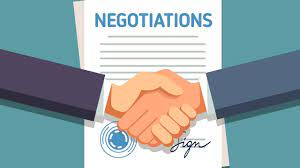4 Strategies for Overcoming Customer Indecision and de-risking your deals
I’m currently reading “The Jolt Effect,” which highlights that a significant portion of sales deals are lost due to customer indecision. What’s the main cause of customer indecision, and how can you help customers be more decisive?
Customers are indecisive because they are more afraid of “messing up” than they are of “missing out.”
Here are 4 strategies I use to overcome decision:
1. Be direct and get to the truth
When you sense a customer is hesitant about moving forward, you have to ask why and get to the truth. Don’t beat around the push. Here are a few questions that you can ask to uncover the hidden objections or concerns.
“Are there any specific obstacles or concerns that might be preventing you from moving forward?”
“What would make you feel more confident in making this decision?”
“It seems like this might not be resonating. Do you mind sharing any concerns you have?”
“What would you need to feel comfortable moving forward?
2. Flexible contracting
Oftentimes customers want to de-risk their deal, since large software purchases typically require big financial commitments and long term contracts.
If the software doesn’t deliver the benefits as promised, Executives are on the hook and could lose their jobs.
One way to help them mitigate this risk is through flexible contracting. Here are a few examples:
Example 1:
If the customer expresses concern about their ability to implement and adopt your solutions in a timely manner, you can use strategies like a “product ramp” or “price ramp” to align their payment schedule and pricing model to their deployment timeline, so they aren’t paying for software which hasn’t been deployed. Or you can apply a “buy back” for the months during implementation, applied as a deal credit or a discount.
Example 2:
If your solution includes new, innovative products which the customer thinks might not be ready yet to support their needs, you can put these products on a separate one year agreement and leave the core, mature products on a 5 year agreement. This way the customer can “opt out” of the newer products if they don’t work as promised after a year. Your deal will also get much bigger, as opposed to taking out the products entirely or losing the bigger deal altogether
3. Start smaller
The customer might not be ready to go ALL IN with your platform yet. In this case, it could make more sense to start with the core solutions or departments where they have the biggest pain points and immediate needs, rather than pitching an Enterprise Agreement. This motion, called “land and expand,” has been extremely successful in many consumption based pricing models such as AWS, Snowflake, and Databricks.
4. Show a conservative ROI
If the customer doesn’t believe your standard ROI projections, work with them to plug in very conservative projections which they can stand behind.
The bottom line is this: you can help customers overcome indecision by being direct, understanding their true concerns and fears, and offering creative solutions to de-risk the deal and demonstrate your commitment to a long-term partnership.
In this week’s video, I dive into each of these strategies in detail to help turn the customers “maybe” into a “yes.” You can find the video here: https://youtu.be/7r3ri5PaZqE
Share:
Weekly Sales Tips

Be the first to know:
Featured Post:
What’s the #1 key to negotiating which very few people talk about? Knowing your worth and believing it!…
